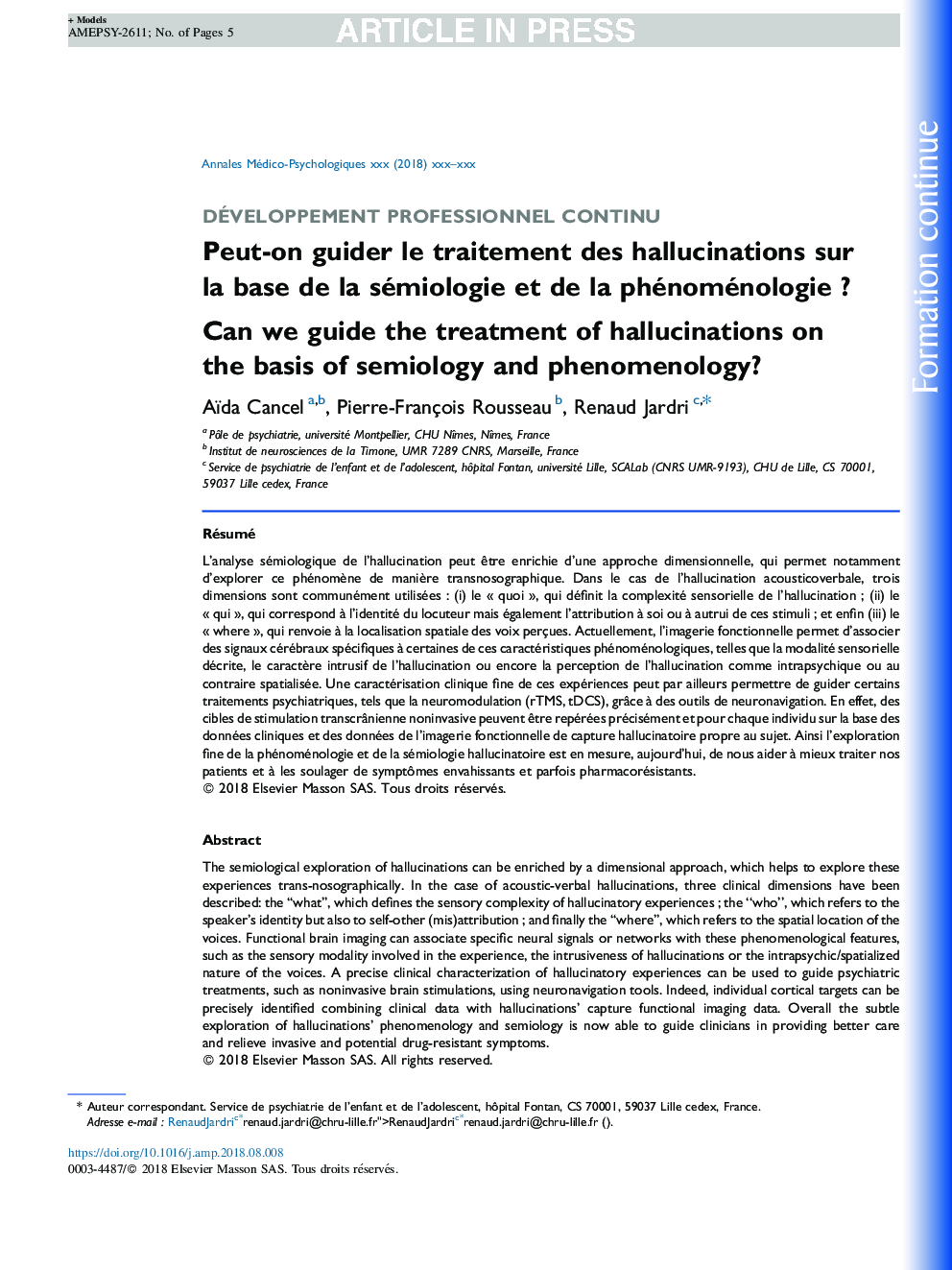| Article ID | Journal | Published Year | Pages | File Type |
|---|---|---|---|---|
| 11008074 | Annales Mdico-psychologiques, revue psychiatrique | 2018 | 5 Pages |
Abstract
The semiological exploration of hallucinations can be enriched by a dimensional approach, which helps to explore these experiences trans-nosographically. In the case of acoustic-verbal hallucinations, three clinical dimensions have been described: the “what”, which defines the sensory complexity of hallucinatory experiences ; the “who”, which refers to the speaker's identity but also to self-other (mis)attribution ; and finally the “where”, which refers to the spatial location of the voices. Functional brain imaging can associate specific neural signals or networks with these phenomenological features, such as the sensory modality involved in the experience, the intrusiveness of hallucinations or the intrapsychic/spatialized nature of the voices. A precise clinical characterization of hallucinatory experiences can be used to guide psychiatric treatments, such as noninvasive brain stimulations, using neuronavigation tools. Indeed, individual cortical targets can be precisely identified combining clinical data with hallucinations' capture functional imaging data. Overall the subtle exploration of hallucinations' phenomenology and semiology is now able to guide clinicians in providing better care and relieve invasive and potential drug-resistant symptoms.
Keywords
Related Topics
Health Sciences
Medicine and Dentistry
Psychiatry and Mental Health
Authors
Aïda Cancel, Pierre-François Rousseau, Renaud Jardri,
